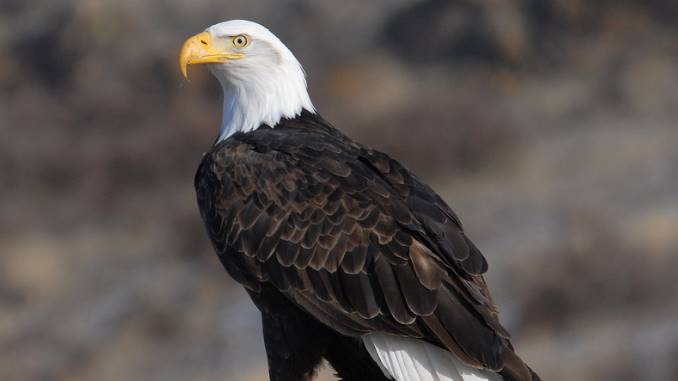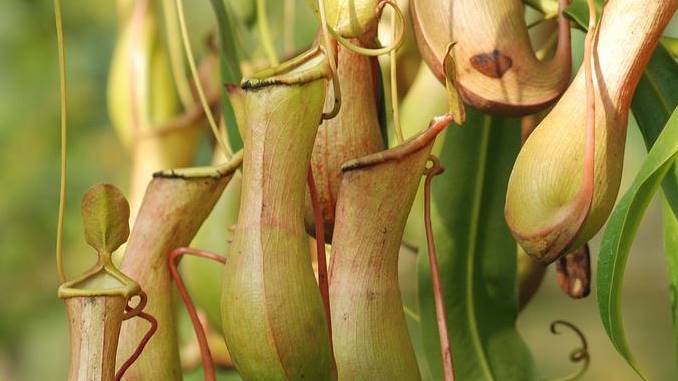Disclaimer: The information presented below is for general informational & educational purposes only. Always consult with animal professionals in case of specific concerns.
Birds are wild animals with the ability to swoop down on animals by surprise.
Thanks to their ability to fly, these animals can fly away when they sense danger. With such a preeminent advantage, you might wonder if any animals take the time to chase birds.
Today, I have compiled a list that includes predators of birds. So, what eats birds?
Let’s find out through this post.
What Eats Birds?
Birds are attractive prey for many animals, such as snakes, foxes, coyotes, cats, squirrels, etc. A bird can fight predators depending on its strength and size.
Chimpanzees
Chimpanzees are part of the apes and are native to the rainforests and savannas of Africa. These animals are fearsome predators of various bird species.
Four subspecies of this species that may be predators of birds include:
- Pan troglodytes ellioti
- Pan troglodytes schweinfurthii
- Pan troglodytes verus
- Pan troglodytes troglodytes
These animals are very intelligent. They can modify rocks, grass, sticks, and leaves to catch smaller prey, including birds. However, chimpanzees don’t make very good pets and might be in danger if living in captivity.
Baboons
Baboons belong to the order of terrestrial primates. These animals mainly live in forests and open savannas throughout parts of Africa.
Baboons come in a variety of sizes, shapes, and colors. Six species of baboons are predators of birds, including:
- Guinea baboons
- Olive baboons
- Hamadryas baboons
- Kinda baboons
- Yellow baboons
- Chacma baboons
These animals sleep on high trees, rocks, or cliffs at night. They will search for prey during the day. Their diet is diverse, including many birds.
Bats
This species is the only mammal that can fly and makes up more than 20% of all known mammals, with more than 1,400 species discovered.
Many studies have shown that the preferred prey of bats is some bird species in the air. Much evidence indicates that giant bats were already eating and eating songbirds in Europe.
The following are some species of bats that are considered predators of the bird:
- Big brown bat
- Little brown bat
- Hoary bat
- Tricolored bat
- Eastern red bat
- Indiana bat
This species is mainly nocturnal. Also, compare to other animals with claws, bats are active and hunt hard at night while sleeping during the day.
Badgers
Despite their shy appearance, badgers are dangerous and can be prolific predators of waterfowl such as ducks. According to a study from North Dakota, more than 3% of badger droppings contain waterfowl carcasses.
This animal also hunts for eggs from waterfowl. The evidence is that about 60% of badgers in the study have feces containing waterfowl eggs.
Therefore, it is undeniable that the honey badger is a formidable predator for many birds, making them a predator that many birds need to be wary of, especially when choosing a nesting place.
Cats
The bird is a favorite prey of wild cats, such as lynx, bobcats, and domestic cats. Researchers have shown that about 60% of the diet of these animals is the bird.
According to a study, in the United States, domestic cats eat about 500 million wild birds each year. Therefore, there is no denying that cats pose a significant threat to the local native bird.
Before eating the bird, feral cats will cover it with sticks, leaves, and dirt, as domestic cats cover it with litter.
Coyotes
Coyotes operate simultaneously in both the countryside and the city.
This animal can appear under porches and floors. In most cases, they will keep their distance from humans.
These predators love to dig and jump and can catch the bird easily. They eat their prey by wrapping around its body and biting on the back of its neck.
These predators are very dangerous. A pack of coyotes can destroy a whole flock of birds in one night.
If these aggressive animals cannot do so, they will keep coming back to destroy each individual in the herd.
Eagles
Basic information:
- Scientific Name: Bald eagle – Haliaeetus leucocephalus
- Diet Type: Carnivore
- Kind of Animal: Bird
- Habitat: Worldwide except in Antarctica
This animals with aggressive predator features feathers around its body and often hunts various animals, including skunks, gulls, hornbills, roadrunners, silvereyes, etc.
Scientists believe that about 28% of this predator’s diet consists of bird species. The rest are mammals, fruit, and other species.

This powerful animal has enormous size and sharp claws, and huge legs. These animals possess a hooked snake beak, allowing them to hunt and eat the smaller bird with ease.
Although eagles like to eat other bird species, they never eat other eagles. Furthermore, these animals have strong stamina, allowing them to carry and eat the bird up to 5 pounds.
Falcons
The falcon has many similarities with the eagle. Yet, they are smaller and faster.
Up to this point, about forty species of falcons are recorded in most parts of the world, belonging to the family Falconidae.
The falcon’s prey is mainly other bird species. Most falcons are thought to have 99% of their diets come from other birds. Their common prey is:
- Songbirds
- Jays
- Pigeons
- Blackbirds
- Starlings
- Waterfowl
- Ducks
- Grebes
- Gulls
- And more
The eyesight of the falcon is very sharp, about 2.6 times that of a human. Therefore, their eyesight is one of their advantages in hunting.
The falcon’s distinctive wings are also beneficial for hunting, allowing them to accelerate quietly and quickly toward their prey.
The falcons will then use their sharp claws to grab their prey before eating them.
Fish
The African tigerfish is a predatory fish that feeds on aquatic birds, such as penguins. They can even jump out of the water by surprise to catch species flying close to the water’s surface.
In addition, there are several other fish that are considered bird predators, such as the Largemouth Bass and the Northern Pike.
Bird-Eating Frog
Giant frogs are said to be able to swallow any prey they catch, including the birds.
Scientists discovered fanged frogs in Thailand in 2009 that often stay near streams and pounce on birds that come to drink.
Further studies also indicated the presence of feathers in the digestive tracts of these frogs, proving them to be formidable predators of the bird.
Hawks

Hawks are well-known predators of birds such as baby chicks and doves. They are often seen in the sky of the countryside and large cities.
When hawks attack a flock of birds, they catch one or two and save the rest. These predators cut off the heads of their prey and eat breast meat and offal.
Like eagles and falcons, hawks have sharp vision, making them dangerous predators for the smaller bird.
As of now, there are about 200 bird species believed to be prey to hawks. However, they usually target landfowl such as turkeys and chickens.
Mink
Mink is a cousin to ferrets and weasels. These animals occur in both America and Europe.
The diet of these animals mainly consists of mammals, birds, and fish. Minks are skilled swimmers, and fish make up most of their diet.
However, studies of the feces of these animals show that birds also contribute significant amounts to their diet.
Owls
Owls often hunt at night, relying mainly on their excellent vision in the dark to capture prey. They are very fond of other birds and mainly focus on the young and avoid the adults.
Raccoons
Another animals with fur on their body, the raccoons, are omnivores and often live in the hollows of trees. Despite their cute and harmless appearance, raccoons can rummage through bird nests for young birds and eat them.
They rarely have the opportunity to catch adult birds. So instead, they will target injured or baby birds.
Red Foxes

These animals also love to eat birds. They will also adopt the same strategies as raccoons to capture their prey.
The foxes are very patient when hunting. They can wait several hours before rushing in to capture their prey.
These foxes will attack the nest to capture eggs and young birds in most cases.
Read more: What Eats Foxes In The Wild?
Snow Foxes
Snow foxes are also known as polar foxes, white foxes, or arctic foxes. They love hunting birds like marine birds.
Snow foxes have adapted to cold areas thanks to their thick, warm fur, which allows them to camouflage and resist the cold.
Squirrels
Squirrels can live in almost any habitat, including semi-arid deserts and rainforests. They can eat injured birds, young birds, or eggs.
Snakes
Snakes are common animals all over the world. They are fearsome predators of eggs and chicks in their nests.
Snakes can also raid unprotected aviaries to hunt for adults and young individuals. In contrast, some bird species also hunt snakes.
Vultures
Vultures are birds of prey and can eat other birds, so they make terrible pets. Vultures rarely attack healthy individuals, but they can easily take down injured or sick individuals.
Weasels
Weasels are mammals and eat a variety of bird species. They are common in South America, North America, Europe, Asia, and small areas of North Africa.
Strange Bird Predators
In addition to the above predators, there are special bird predators that few people know about.
Plants

Several carnivorous, venomous plants can trap and capture and digest many bird species, such as pitcher plants.
Sea Anemones
Sea anemones, although slow, may trap the wading bird, seabird, or gull chick.
In some cases, the bird may drown at high tide before the anemone strikes, and the anemone will happily consume the dead bird.
Insects
While many bird species eat insects, small bird species can also be the prey to the insects.
For example, mantises are known to be hummingbird predators or the goliath bird-eating tarantula.
Conclusion
Hopefully, we have helped you answer the question, “What eats birds?”
There are many animals that naturally prey on birds, such as foxes, coyotes, snakes, squirrels, and more.

Hi, my name is John, and I’m an animal lover. I’ve been fascinated with the animal kingdom since I was 5 years old, and my passion keeps growing bigger as I age. And this blog is where I share my researches and passion with animal lovers all around the world.

